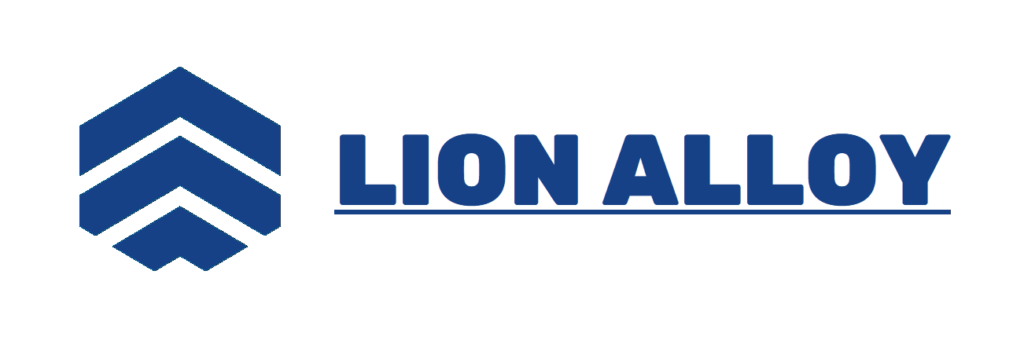介紹
在高性能工程材料的領域中,Nimonic 80A是一種高級選擇,特別是對於需要出色強度,抗氧化性以及在升高溫度下的可靠性的應用。基於鎳的超級合金像Nimonic 80a一樣針對某些最苛刻的環境進行了設計,例如在航空航天,發電和化學處理中發現的環境。本文研究了與其他常用合金相比,Nimonic 80a的屬性,並解釋了為什麼用這種超級合金製成的偽造組件是高性能應用的首選選擇。
1。Nimonic80a概述
1.1 Nimonic 80a的組成
Nimonic 80a是一種基於鎳的超級合金,結合了獨特的元素,以增強其性能特徵。
表1:Nimonic 80a的化學組成
| 元素 | 百分比 (%) | 功能 |
|---|---|---|
| 鎳 | 46.0 | 鹼金屬提供延展性和強度 |
| 鉻 | 20.0 | 增強氧化抗性 |
| 鐵 | 5.0 | 提供額外的力量 |
| 鉬 | 1.0 | 增加高溫強度 |
| 鈷 | 3.0 | 改善蠕變抗性 |
| 鈦 | 1.0 | 提供強度並穩定結構 |
| 鋁 | 0.5 | 抗氧化抗性 |
| 碳 | 0.05 | 改善硬度和整體力量 |
| 其他的 | 平衡 | 包括錳,矽,磷,硫 |
1.2關鍵屬性
Nimonic 80a具有幾種基本特性,使其非常適合高溫應用。
表2:Nimonic 80a的機械性能
| 財產 | 價值 |
|---|---|
| 屈服強度(MPa) | 600 |
| 極限拉伸強度(MPa) | 860 |
| 伸長率(%) | 30 |
| 硬度(HB) | 200 |
| 彈性模量(GPA) | 200 |
1.3高溫穩定性
Nimonic 80a在高溫下保持其機械完整性和性能,使其適用於渦輪組件和燃燒環境等應用。
表3:高溫強度保留
| 溫度(°C) | 屈服強度(MPa) | 極限拉伸強度(MPa) |
|---|---|---|
| 600 | 550 | 800 |
| 700 | 500 | 750 |
| 800 | 450 | 700 |
| 900 | 400 | 650 |
2。與其他合金的比較
為了了解為什麼Nimonic 80a通常是高性能應用的首選選擇,我們可以將其與其他幾種常用合金(包括Inconel 625,Inconel 718和Waspaloy)進行比較。
2.1 Inconel 625
Inconel 625是一種鎳 - 氯銨合金,以其對高溫氧化和腐蝕的優異抗性而聞名。
表4:Nimonic 80A和Inconel 625的比較
| 財產 | Nimonic 80a | 鉻鎳鐵合金625 |
|---|---|---|
| 屈服強度(MPa) | 600 | 550 |
| 極限拉伸強度(MPa) | 860 | 770 |
| 抗氧化性 | 好的 | 出色的 |
| 高溫應用 | 是的 | 是的 |
2.2 Inconel 718
Inconel 718是另一種鎳鉻合金,可在高溫下提供出色的機械性能,並且經常用於航空航天應用。
表5:Nimonic 80A和Inconel 718的比較
| 財產 | Nimonic 80a | 鉻鎳鐵合金718 |
|---|---|---|
| 屈服強度(MPa) | 600 | 930 |
| 極限拉伸強度(MPa) | 860 | 1000 |
| 抗蠕變性 | 出色的 | 好的 |
| 機械加工性 | 緩和 | 高的 |
2.3黃蜂
Waspaloy是一種基於鎳的超合金,以其在高溫下的高強度和氧化耐藥性而聞名。
表6:Nimonic 80a和Waspaloy的比較
| 財產 | Nimonic 80a | 黃蜂 |
|---|---|---|
| 屈服強度(MPa) | 600 | 1000 |
| 極限拉伸強度(MPa) | 860 | 1300 |
| 抗氧化性 | 好的 | 出色的 |
| 成本 | 更負擔得起 | 更高 |
3。鍛造組件的優勢
鍛造的過程增強了尼羅尼克80a的機械性能,使其在高性能應用中優越。
3.1改進的機械性能
鍛造使晶粒結構對齊,提高強度和韌性。通過鍛造產生的組件比單獨的鑄造或加工表現出更好的性能。
表7:鍛造與鑄件的機械性能
| 財產 | 鍛造的nimonic 80a | 演員命名80a |
|---|---|---|
| 屈服強度(MPa) | 600 | 450 |
| 極限拉伸強度(MPa) | 860 | 650 |
| 衝擊強度(J) | 更高 | 降低 |
| 疲勞壽命 | 更長 | 短 |
3.2對缺陷的阻力增強
鍛造可降低孔隙率和其他在鑄件中經常發現的缺陷的可能性,從而削弱材料的完整性。
3.3自定義靈活性
鍛造允許根據特定應用程序量身定制的自定義形狀和尺寸,從而增強了複雜組件中的設計功能。
表8:鍛造功能
| 特徵 | 細節 |
|---|---|
| 複雜的幾何形狀 | 可以通過專門的死亡來實現 |
| 大型組件尺寸 | 適當的設備可能 |
| 物質利用 | 與加工相比,將廢物降至最低 |
4。鍛造的Nimonic 80A組件的應用
Nimonic 80a鍛造組件在高性能至關重要的各個行業中廣泛使用。
4.1航空航天
在航空航天應用中,由於其高溫和氧化能力,Nimonic 80a用於渦輪葉片,墊片和燃燒室。
表9:航空航天申請
| 成分 | 功能 |
|---|---|
| 渦輪刀片 | 高壓力和耐熱性 |
| 燃燒室 | 氣體遏制 |
| 發動機組件 | 結構完整性和耐用性 |
4.2發電
在發電系統中,Nimonic 80a用於氣體和蒸汽輪機組件,在效率和可靠性至關重要。
表10:發電應用程序
| 成分 | 功能 |
|---|---|
| 瓦斯渦輪機 | 能源轉化和效率 |
| 熱交換器 | 熱調節和可靠性 |
| 燃燒室 | 燃燒過程 |
4.3化學處理
Nimonic 80a用於必須承受腐蝕性環境和極端溫度的化學加工設備。
表11:化學處理應用
| 成分 | 功能 |
|---|---|
| 反應堆容器 | 遏制反應性材料 |
| 熱交換器 | 增強的熱管理 |
| 泵和閥 | 腐蝕條件下的耐用性 |
5。結論
當評估高性能應用的材料時,Nimonic 80a由於其出色的機械性能而成為領先的選擇,尤其是在鍛造時。雖然其他合金(例如Inconel 625,Inconel 718和Waspaloy)具有競爭性能,但在苛刻的環境中,Nimonic 80A提供的強度,氧化耐藥性和可定制的製造的結合將其視為首選合金。
由Nimonic 80A製成的鍛造組件可確保卓越的性能和可靠性,使其適用於整個航空航天,發電和化學加工行業的關鍵應用。鍛造技術和合金降解的持續進步進一步增強了Nimonic 80a的潛力,從而確保了其在追求高性能製造業卓越的相關性。


